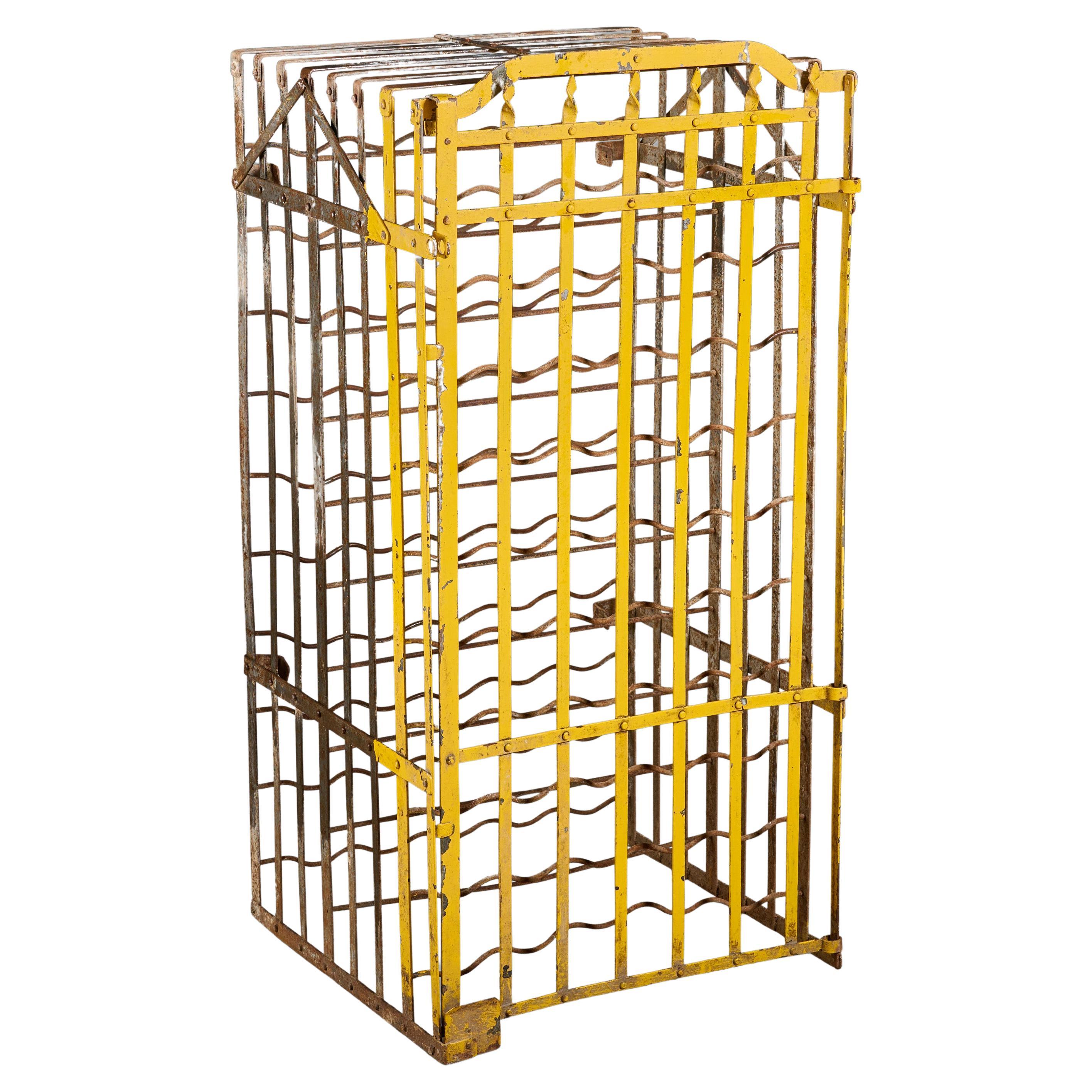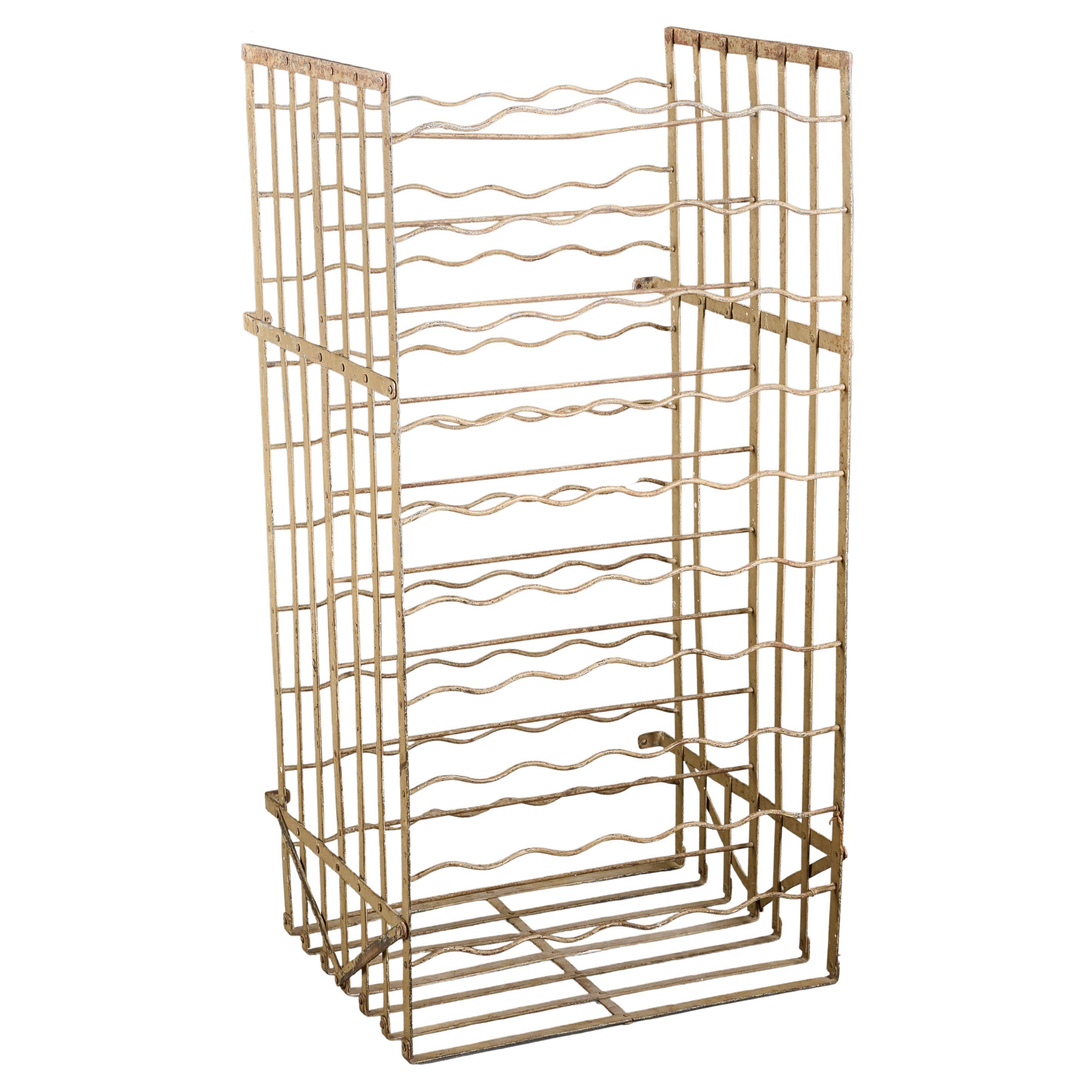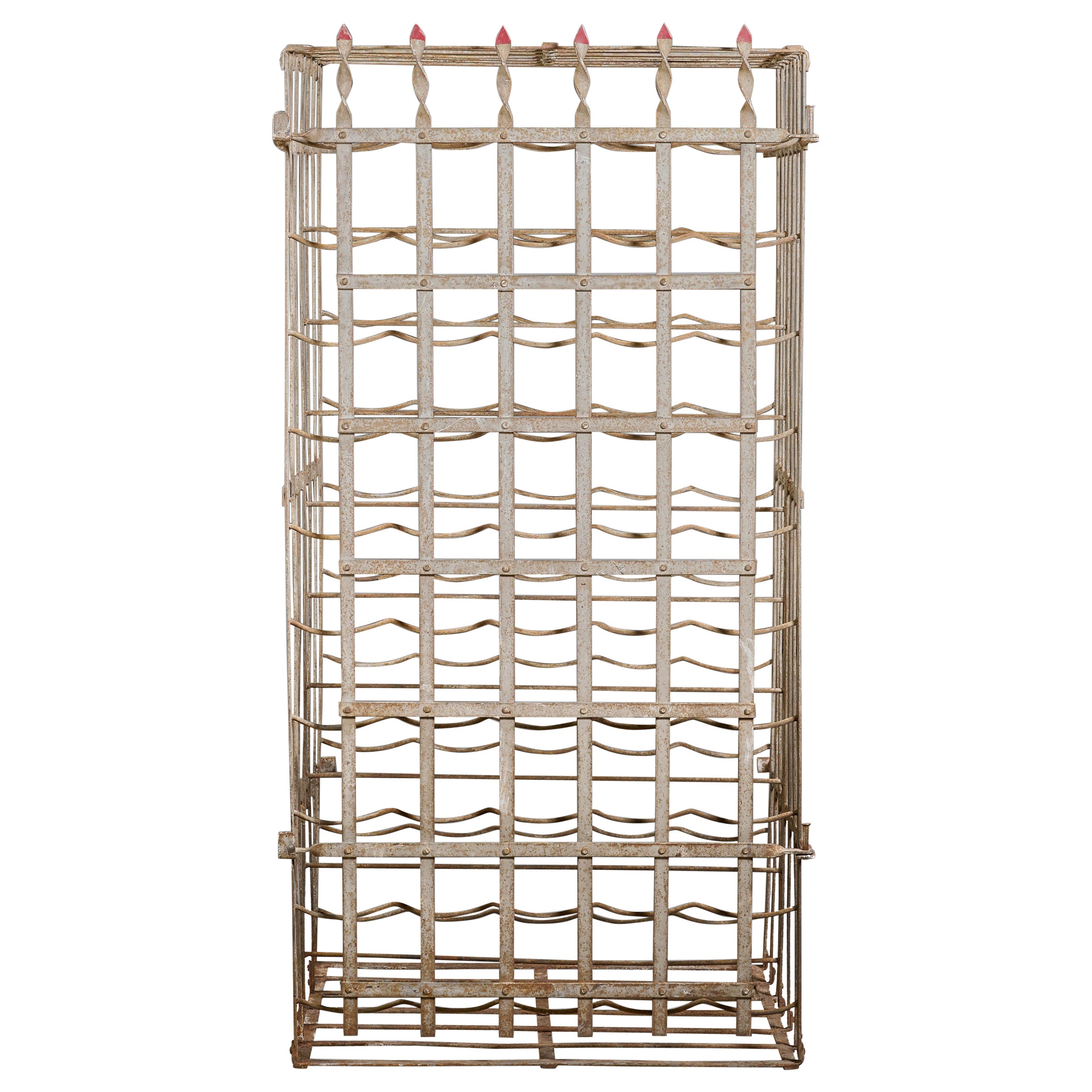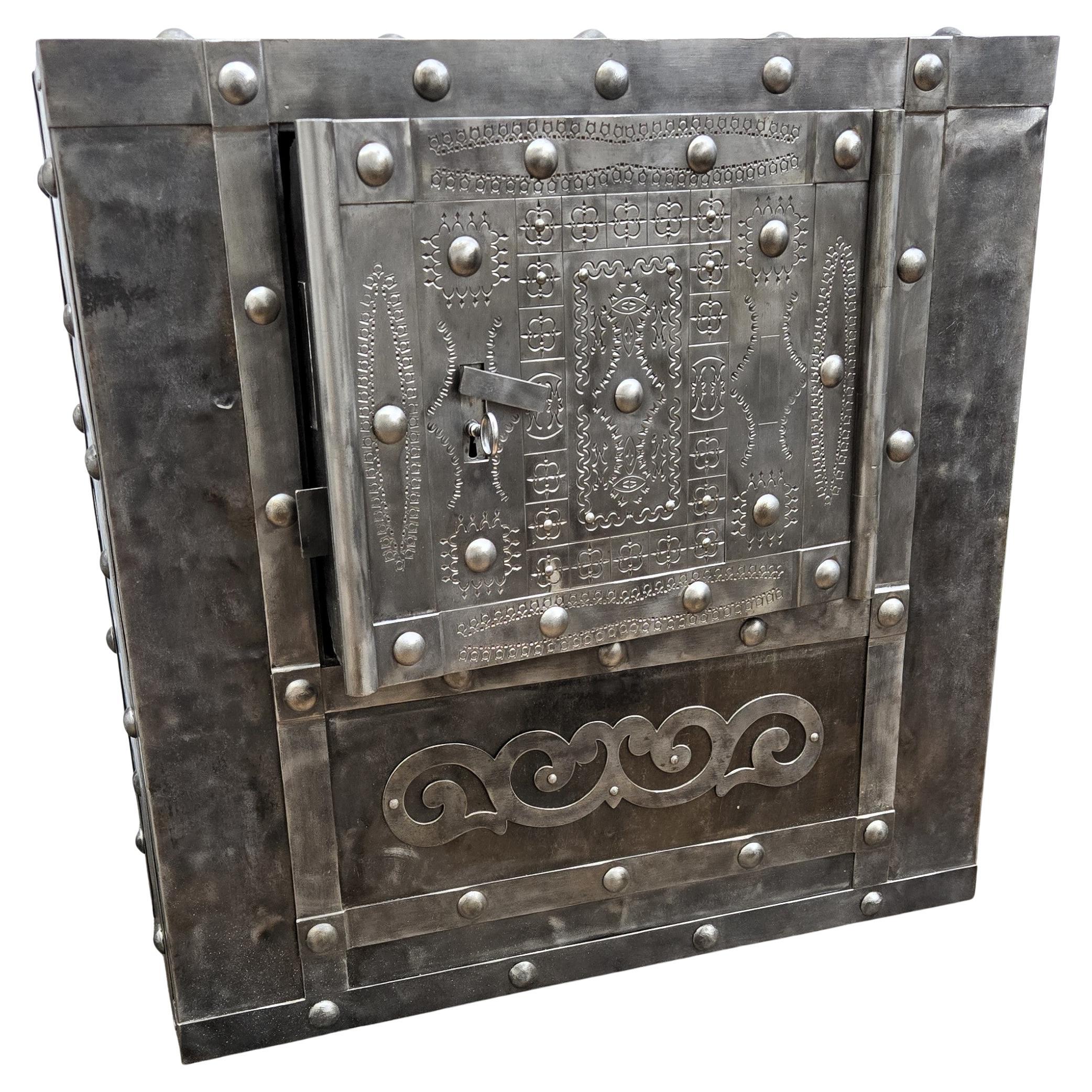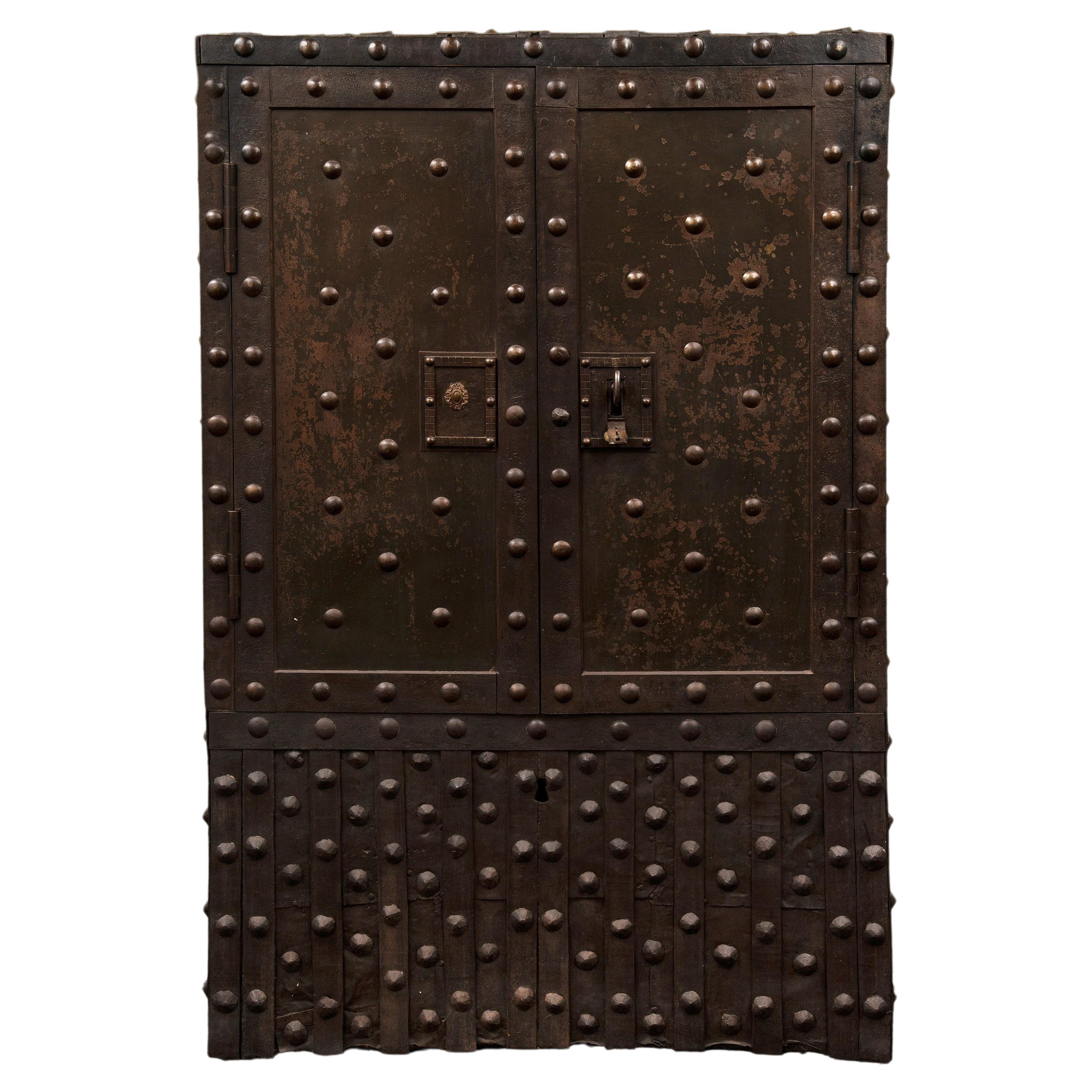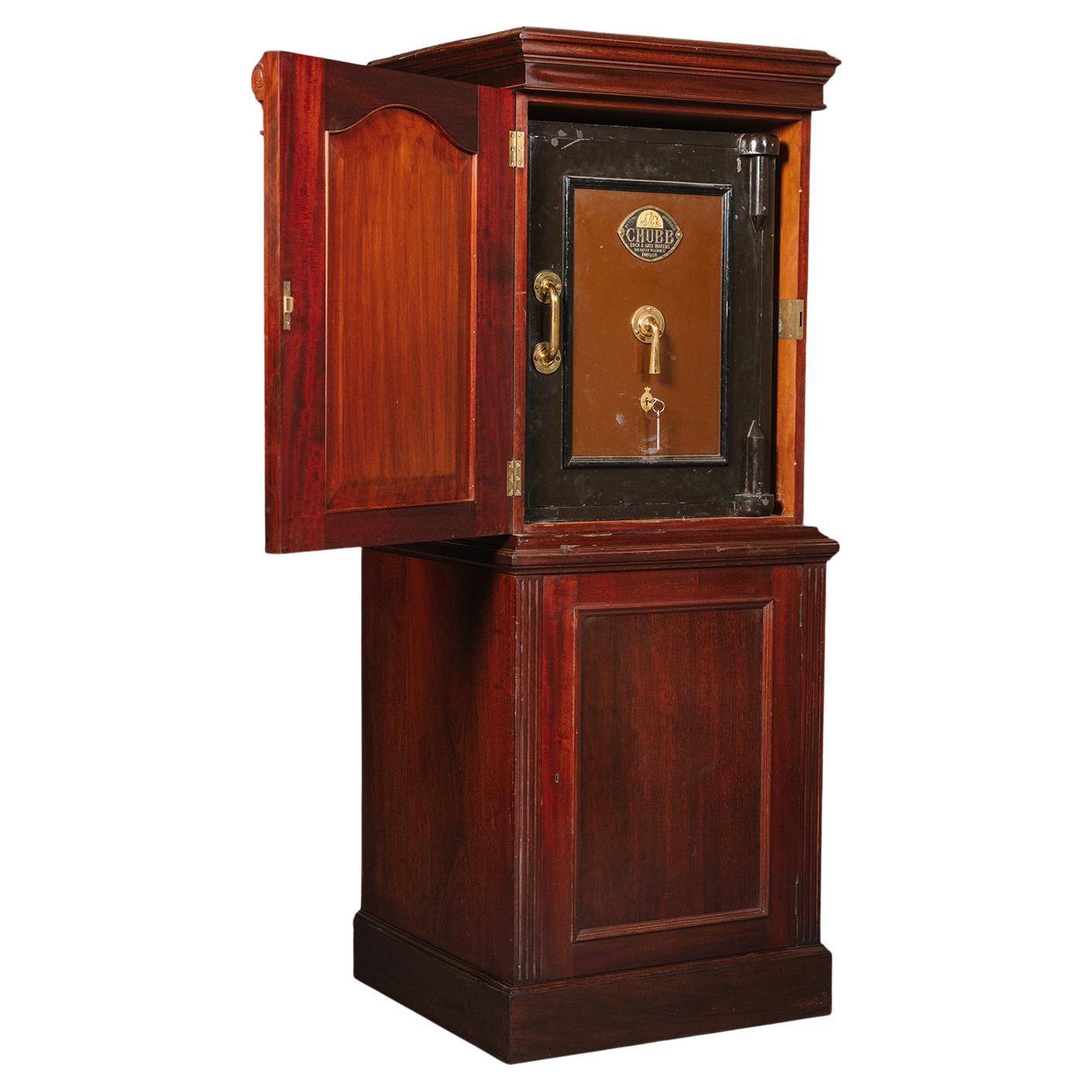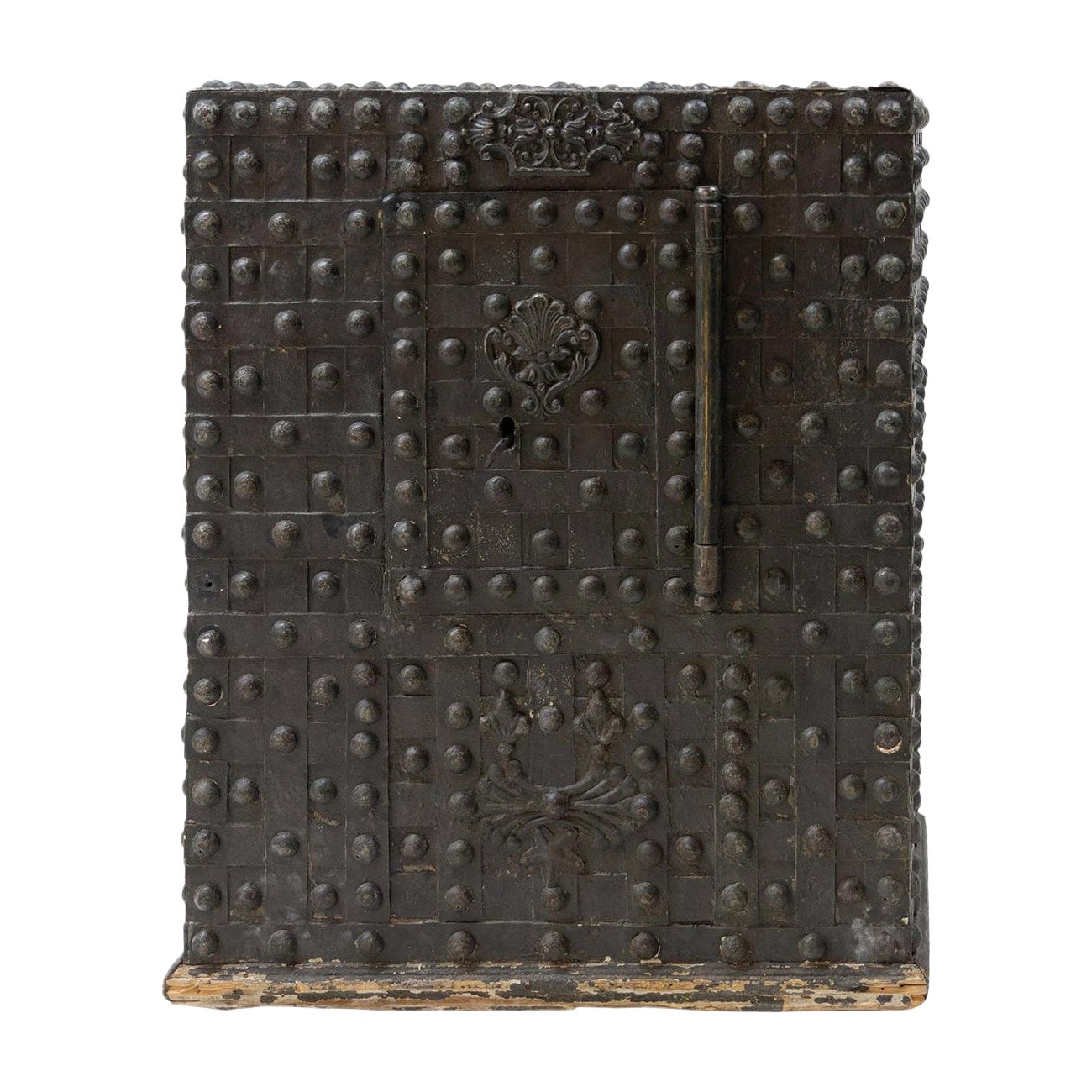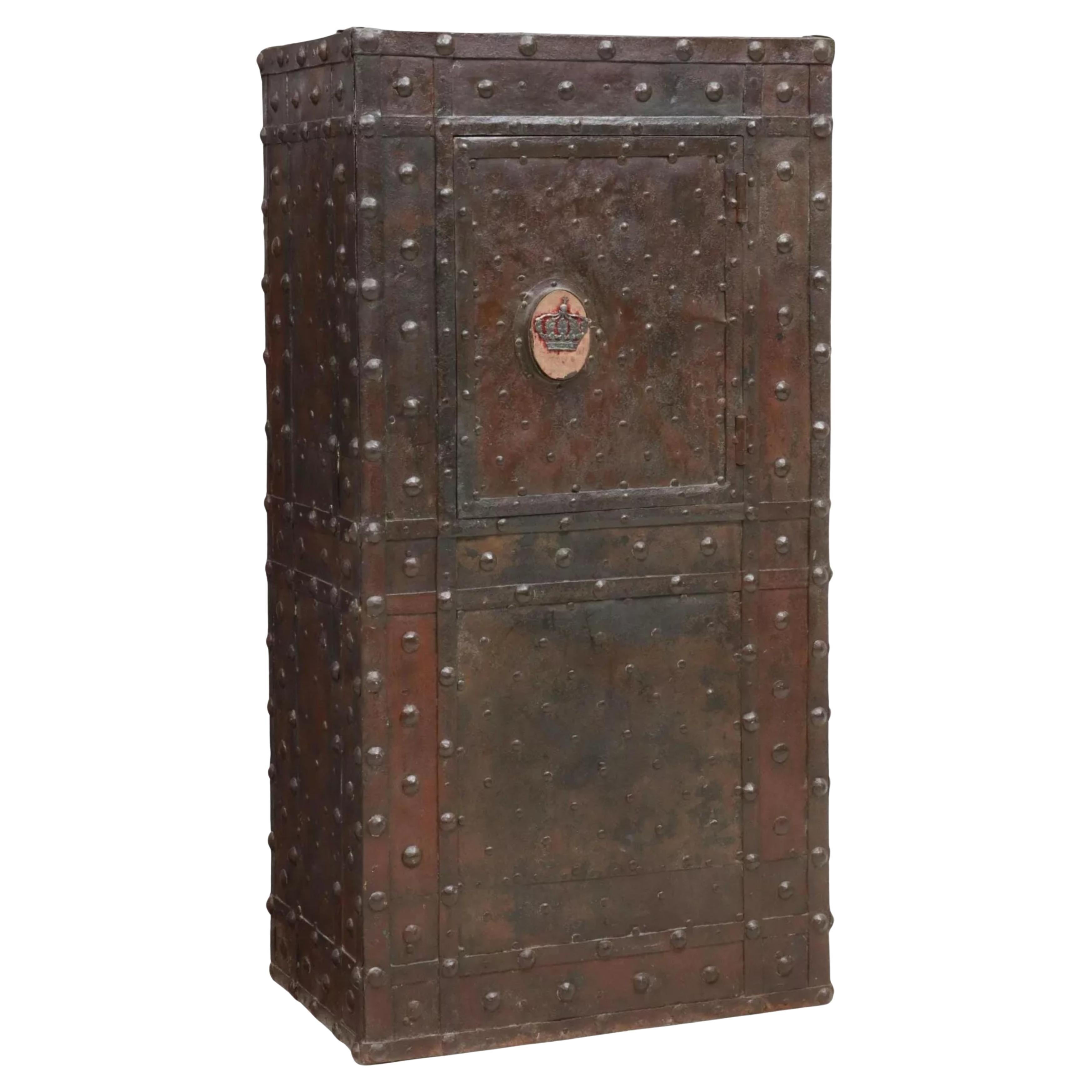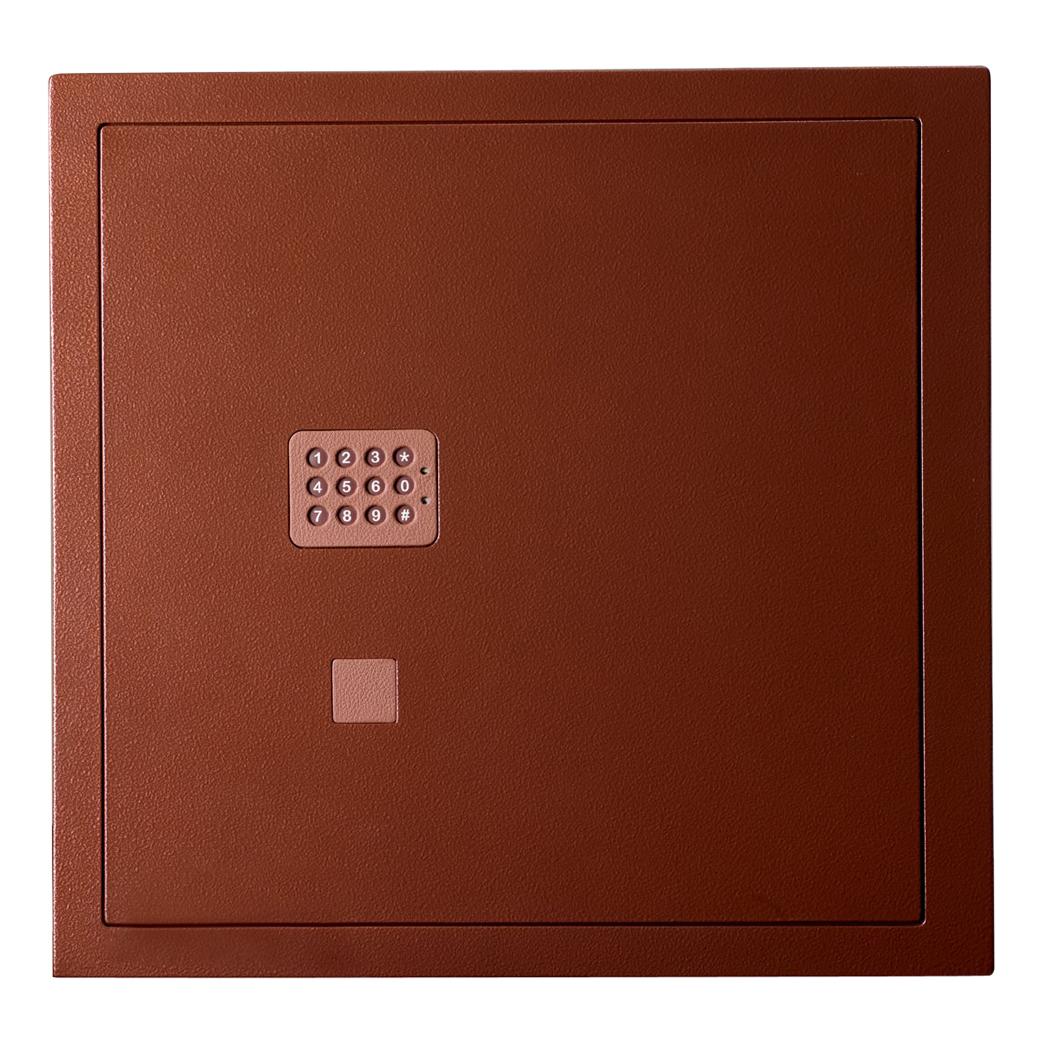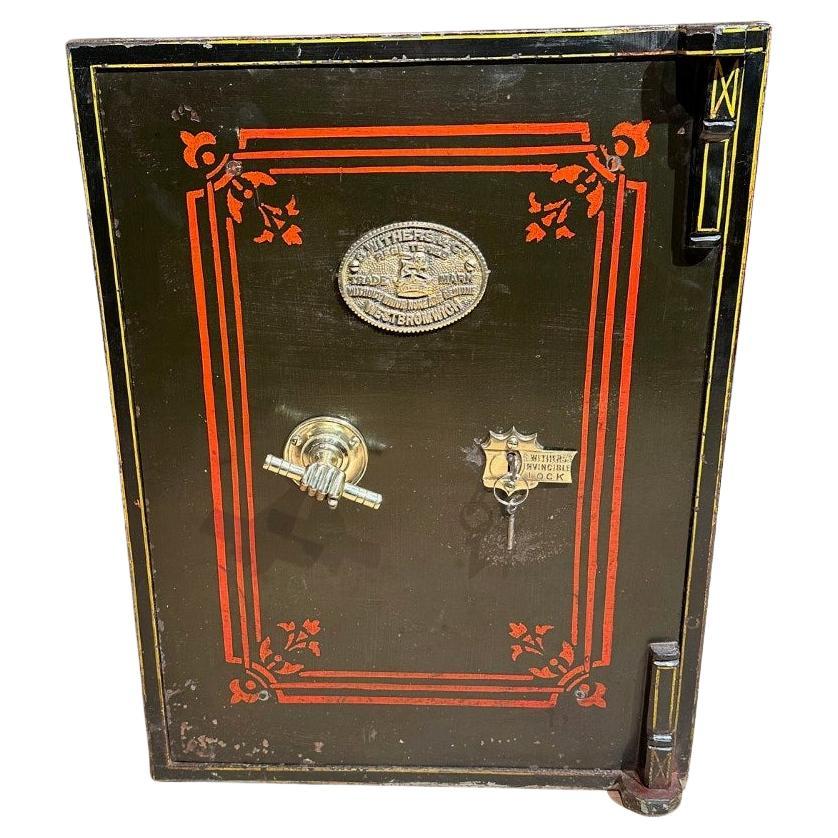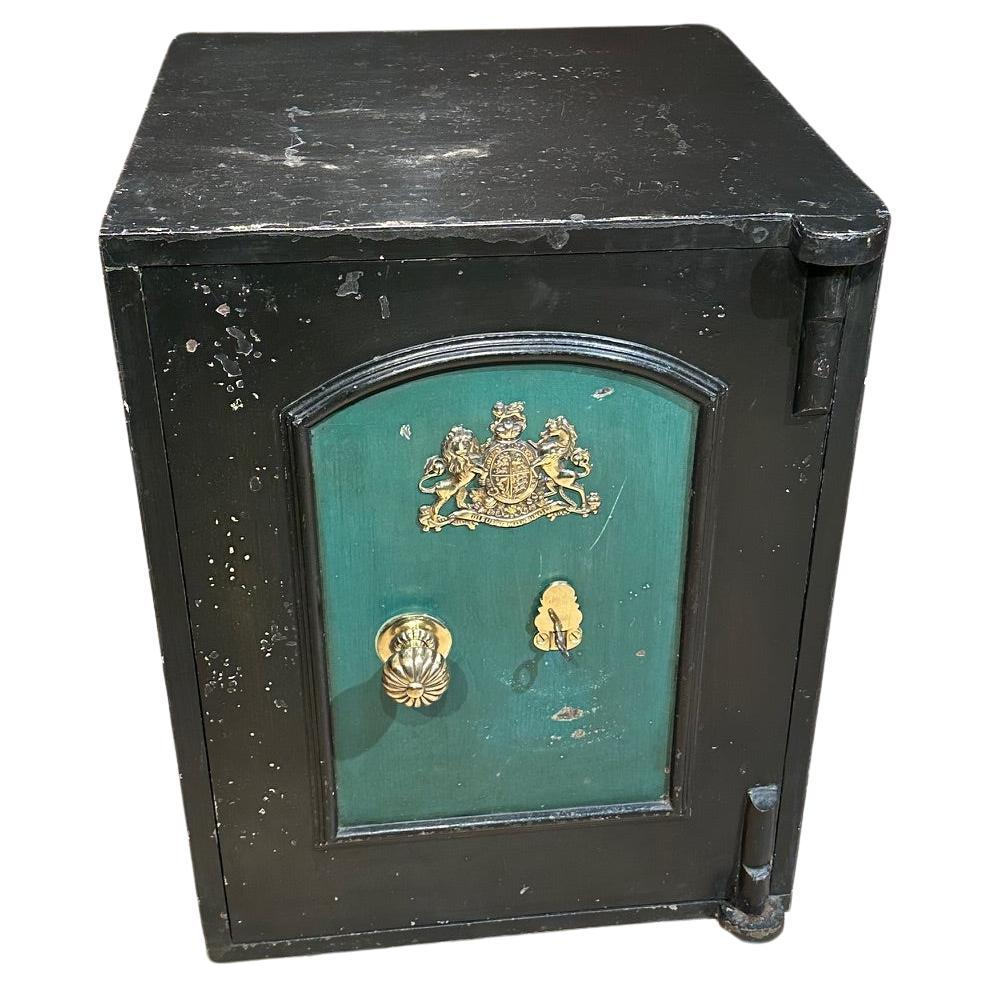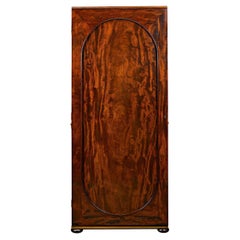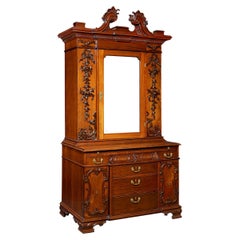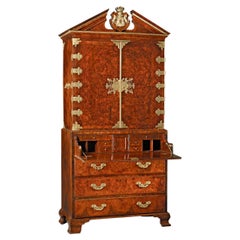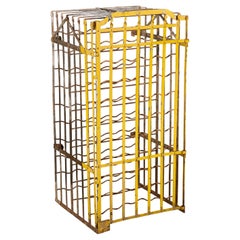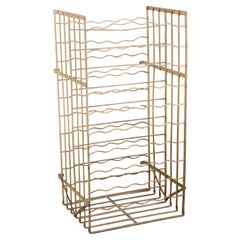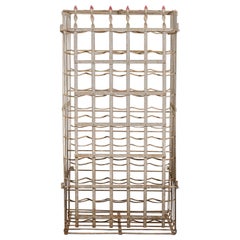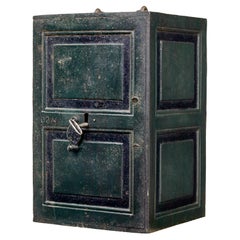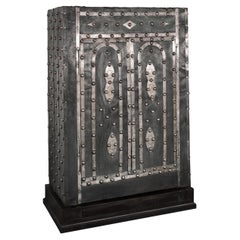
Italian Iron Safe
View Similar Items
Want more images or videos?
Request additional images or videos from the seller
1 of 9
Italian Iron Safe
About the Item
- Dimensions:Height: 80 in (203.2 cm)Width: 55.38 in (140.67 cm)Depth: 27.75 in (70.49 cm)
- Materials and Techniques:
- Place of Origin:
- Period:
- Date of Manufacture:Circa 1850
- Condition:Additions or alterations made to the original: Once inside, the lit interior of the safe features three levels of shelving as well as racks for wine or champagne glasses. The back of the safe is mirrored, creating a striking visual effect.
- Seller Location:New Orleans, LA
- Reference Number:Seller: 31-68161stDibs: LU891134916992
About the Seller
5.0
Recognized Seller
These prestigious sellers are industry leaders and represent the highest echelon for item quality and design.
Established in 1912
1stDibs seller since 2010
107 sales on 1stDibs
Typical response time: 3 hours
Authenticity Guarantee
In the unlikely event there’s an issue with an item’s authenticity, contact us within 1 year for a full refund. DetailsMoney-Back Guarantee
If your item is not as described, is damaged in transit, or does not arrive, contact us within 7 days for a full refund. Details24-Hour Cancellation
You have a 24-hour grace period in which to reconsider your purchase, with no questions asked.Vetted Professional Sellers
Our world-class sellers must adhere to strict standards for service and quality, maintaining the integrity of our listings.Price-Match Guarantee
If you find that a seller listed the same item for a lower price elsewhere, we’ll match it.Trusted Global Delivery
Our best-in-class carrier network provides specialized shipping options worldwide, including custom delivery.More From This Seller
View AllLouis XIV Inspired French Linen Press
Located in New Orleans, LA
Enveloped in sumptuous parquetry and doré bronze, this majestic Louis XIV inspired French linen press displays the characteristics of superior craftsmanship and luxurious design seen in the creations of the iconic Françios Linke. Crafted of sumptuous kingwood, the glorious parquetry door opens to reveal six compartments used to store linens, such as those for the bedroom or even the dining table. The masterful woodwork is flawlessly balanced by intricate doré bronze mounts in the form of Neoclassical floral swags, garlands, plumes and acanthus scrolls. The delicately spiraled doré bronze feet give the cabinet a sense of lightness and balance. Enhanced by a beautiful rouge marble top, this elegant linen press is an excellent example of late 19th century French furniture...
Category
Antique 19th Century French Louis XIV Linen Presses
Materials
Bronze
English Upright Cane Cabinet
Located in New Orleans, LA
This English cane cabinet exhibits classical style and impeccable design. Crafted of lustrous Cuban mahogany, this upright case features a beautifully paneled door which opens to rev...
Category
Antique 19th Century English Cabinets
Materials
Brass
$28,500
Mahogany Bureau Cabinet After Thomas Chippendale
By Thomas Chippendale
Located in New Orleans, LA
This extraordinary Irish bureau cabinet was crafted based on a design for a desk and bookcase drawn from Thomas Chippendale’s famed 1762 edition of The Gentleman and Cabinet-Maker's ...
Category
Antique 18th Century Irish Chippendale Cabinets
Materials
Mirror, Mahogany
King George I Ambassadorial Secrétaire-Cabinet
Located in New Orleans, LA
This highly important secrétaire-cabinet was crafted for and specially ordered by King George I for the British Ambassador to Russia. From its craftsmanship and materials to its exceptional artistry, it is a work of royal and historic significance that exudes power in each and every detail. The broken pediment at its apex features the simplified royal coat of arms bearing the king’s crown, while the interior is adorned by portraits of the British Royal Family. Placed within the ambassador’s St. Petersburg home, this entirely unique piece of furniture would have been a potent reminder of England's grandeur and political importance.
Relations between England and Russia during this period were at an all-time high. Peter the Great had traveled to England in 1698 as part of his widely known “Grand Embassy” tour, wherein he attempted to gain foreign support against the Ottoman Empire. He spent a period of nearly four months there, meeting with King William III and his court on numerous occasions. Noted academic Arthur MacGregor wrote concerning the impact of the trip, “For two decades following Peter's visit, British influence in Russia reached a peak. It manifested itself in social custom, in craft practice and in ships and naval organization... it reached a significant sector of the population before relations cooled once again and the two nations pulled back from this era of unprecedented cordiality.”
First and foremost, however, it is a reminder of British might and influence. By the reign of King George I, England had come into its own as a world power. Unique in its design, this cabinet is a reflection of the country’s might. It is crafted from the highest-quality solid walnut and burr walnut adorned by gilded lock plates and engraved hinges. The presence of ormolu at its apex and lining the doors was a rarity for this period, and its addition makes manifest the importance of the design.
The outer doors open to reveal multiple interiors, including fifteen separate drawers around a central cupboard; the cupboard doors each bear mezzotint portraits of George I and his father, Ernest Augustus, Elector of Hanover. An etching after the portrait of George I dating to circa 1716 is in London’s Royal Academy. A second, inner pair of doors are adorned by mezzotints of the Prince and Princess of Wales (later Queen Caroline and George II), which are both after portraits by Sir Godfrey Kneller dated 1716 in the Royal Collection. A final portrait is revealed on the very interior of the cabinet, where a mezzotint of Frederick, Anne, Amelia and Caroline, children of the Prince of Wales, resides. An etching (circa 1715-1720) after this portrait can be found in the National Portrait Gallery (London).
Apart from its abundance of royal portraiture, the cabinet features stunning painted decoration, including floral designs as well as clouds, birds and trees in a bucolic motif reminiscent of Eden. Its lower portion is a study in both form and function, featuring a fitted secrétaire-drawer above three additional drawers for storage. The cabinet appears in The Shorter Dictionary of English Furniture by R. Edwards from 1964, a text that is regarded as the bible of British furniture design. Edwards describes it as a “writing cabinet...given by George I to the British Ambassador at the Russian court.”
The cabinet was likely made for the 18th-century German diplomat and writer Friedrich Christian Weber, who represented English interests at the Russian court from 1714 until 1719. Although Weber’s tenure as ambassador was relatively short, while in St. Petersburg, he authored his account entitled Das veraenderte Russland (The Present State of Russia), which was published in three volumes in 1721, 1739 and 1740. It may, however, also have been made for George Douglas, 2nd Earl of Dumbarton, who served as ambassador alongside Weber in 1716. Diplomatic relations ceased between the two countries in 1721.
In 1928, the cabinet appeared for sale at the International Exhibition of Antiques & Works of Art in Olympia. It had previously been in the collection of the Woltner family of Bordeaux, the celebrated vintners who owned the estate Château Laville Haut-Brion and produced wine of the same name. According to the family, Monsieur Woltner was given the cabinet as a gift from an aunt who lived in Russia for many years. After leaving the Woltner collection, the cabinet was acquired by William Berry...
Category
Antique 18th Century English Georgian Secretaires
Materials
Brass
John Henry Belter Rosewood Armoire
By John Henry Belter
Located in New Orleans, LA
One of the rarest furniture forms created by John Henry Belter, this armoire is a testament to this legendary cabinet maker's talent. Recognized as a Pioneer in design and craftsmans...
Category
Antique 19th Century American Rococo Revival Wardrobes and Armoires
Materials
Rosewood
19th Century Coromandel Inlaid Vitrine
Located in New Orleans, LA
Highly-prized coromandel, or East Indian ebony, was used to create this beautiful Victorian vitrine. Featuring delicate inlay in the Victorian/Edwardian style and glass panels framed in the equally luxurious satinwood, this cabinet is constructed to fit flush against a wall with baseboards. Elegant cabinets such as this are perfect for displaying one's treasures, but with original locks, keys, mirrors and fleur-de-lis fabric, this case is a prized possession unto itself,
circa 1890.
Measures: 30" wide x 14 ½" deep x 41 ½" high.
Coromandel ebony is variegated brown and black, often called "streaky," wood. It is considered a highly valuable wood for turnery, fine cabinet...
Category
Antique 19th Century English Victorian Vitrines
Materials
Glass, Mirror, Ebony, Satinwood
You May Also Like
Wrought Iron Wine Safe
Located in Round Top, TX
Wrought iron multi bottle wine safe. For wall or floor.
Category
Vintage 1930s Argentine Dry Bars
Materials
Wrought Iron
$1,250
Wrought Iron Wine Safe
Located in Round Top, TX
Wrought iron multi bottle wine safe. Hangs on wall or sits on floor.
Category
Vintage 1930s Argentine Cabinets
Materials
Wrought Iron
$1,250
Wrought Iron Wine Safe
Located in Round Top, TX
Wrought iron multi bottle wine safe. Hangs on wall or sits on floor.
Category
Vintage 1930s Argentine Cupboards
Materials
Wrought Iron
$1,350
Early 19th century painted iron safe
Located in Debenham, Suffolk
Early 19th century painted iron safe circa 1830.
We are pleased to offer this cast iron safe in near original condition and still functioning today.
Cast fielded panels to front an...
Category
Antique Mid-19th Century English Early Victorian Cabinets
Materials
Iron
18th Century Wrought Iron Italian Antique Hobnail Safe Strong Box Bar Cabinet
Located in Carimate, Como
Beautiful and rare example of late 18th century Italian master blacksmith craftsmanship, this antique studded safe with typical all-around hobnails and great wrought iron details, pr...
Category
Antique Late 18th Century Italian Baroque Cabinets
Materials
Metal, Wrought Iron
Double door safe - Italian, 18th Century
Located in Bruxelles, BE
Cassa-forte
Double door safe
Italian, 18th Century
Iron & Wood
Height: 157 cm
Width: 104 m
Depth: 53 cm
Category
Antique 18th Century Italian Louis XVI Cabinets
Materials
Iron
$21,625 Sale Price
25% Off
Recently Viewed
View AllMore Ways To Browse
Italian Wine Rack
Antique Keyhole Cover
Antique Floor Safes
Champagne Rack
Antique Lock Picking
3 Way Floor Mirror
Clear Glass Hobnail
Antique Iron Wine Rack
Hobnail Antique Safe
Hobnail Safe
Antique Farmhouse Cabinet
Dart Cabinets
Early American Display Cabinet
Glass And Brass China Cabinet
Glass Counter Cabinet
Pedestal Cabinet Pair
Shallow Wood Cabinet
Used Cabinets Maryland
